OCTOBER 2018
GREETINGS! I hope your October has been off to a great start. I don’t know about you, but I’m so ready for a bit of cooler weather and Fall is my favorite season. It’s a great time to still do all kinds of outdoor activities, and home shopping is definitely one of them! If you are getting ready to put your home on the market, or maybe already do but not getting the response you’ve hoped for, it may be time to consider refreshing the look (and maybe a price change). This month I would like to share with you an interview from one of the top Stagers in the country. Staging in Luxury and all price points is extremely important. Perhaps you already have an eye and knack for it, but if not, there are many Stagers I can recommend in the Atlanta area who work wonders and are budget friendly. Although this article and interview is with a Los Angeles based designer (who started the staging trend over 20 years ago!), the philosophy is pretty much shared throughout the country, and staging is now considered a standard “must” for most all listings. I hope you enjoy reading this and who knows, you just might pick up a tip or two!
AND DON’T FORGET TO CALL ME FOR ANY REAL ESTATE NEED…I CAN HELP YOU! 404-229-8242 OR TONI@TONIITKIN.COM
The Evolution of Luxury Home Staging
Topic:
Interior designers often like to say that there are no rules in design. Small spaces can pop with dark paint. Prints can be mixed for greater interest in a room. Metals don’t have to match. In the world of home staging, however, there is one rule — or shall we say, there is one rule that Meridith Baer follows with dedicated resolve: Turn a house into a home. The Los Angeles-based staging entrepreneur, businesswoman and designer has made this mantra her mission for 20 years — the same amount of time that home staging has been in existence. That’s because Baer essentially invented the concept.
To say that Meridith Baer forever changed the way real estate professionals market their homes is not hyperbole. According to the National Association of Realtors® (NAR) 2017 Profile of Home Staging, 62% of sellers’ agents said that staging a home decreases the amount of time a home spends on the market. Staged homes, on average, have also been known to sell for more money. The same NAR study found that 29% of seller’s agents reported an increase of one to five% in dollar value offered by buyers, 21% reported an increase of 8 to 10%, and 5% reported an increase of 11 to 15%. Noted NAR President William E. Brown: “Realtors® know how important it is for buyers to be able to picture themselves living in a home and, according to NAR’s most recent report, staging a home makes that process much easier for potential buyers.”
For the many real estate professionals who specialize in the luxury sector, home staging is an expected part of the business of selling not just a million dollar residence, but a million dollar lifestyle. Baer know understands this better than anyone. Even Baer’s celebrity clients such as Julia Roberts and Scarlett Johansson have experienced — and benefited from — the power of staging, firsthand. “Her interior face-lifts make a house feel like a home to anyone who visits — important even if you’re not selling,” wrote Kristan Schiller for Architectural Digest.
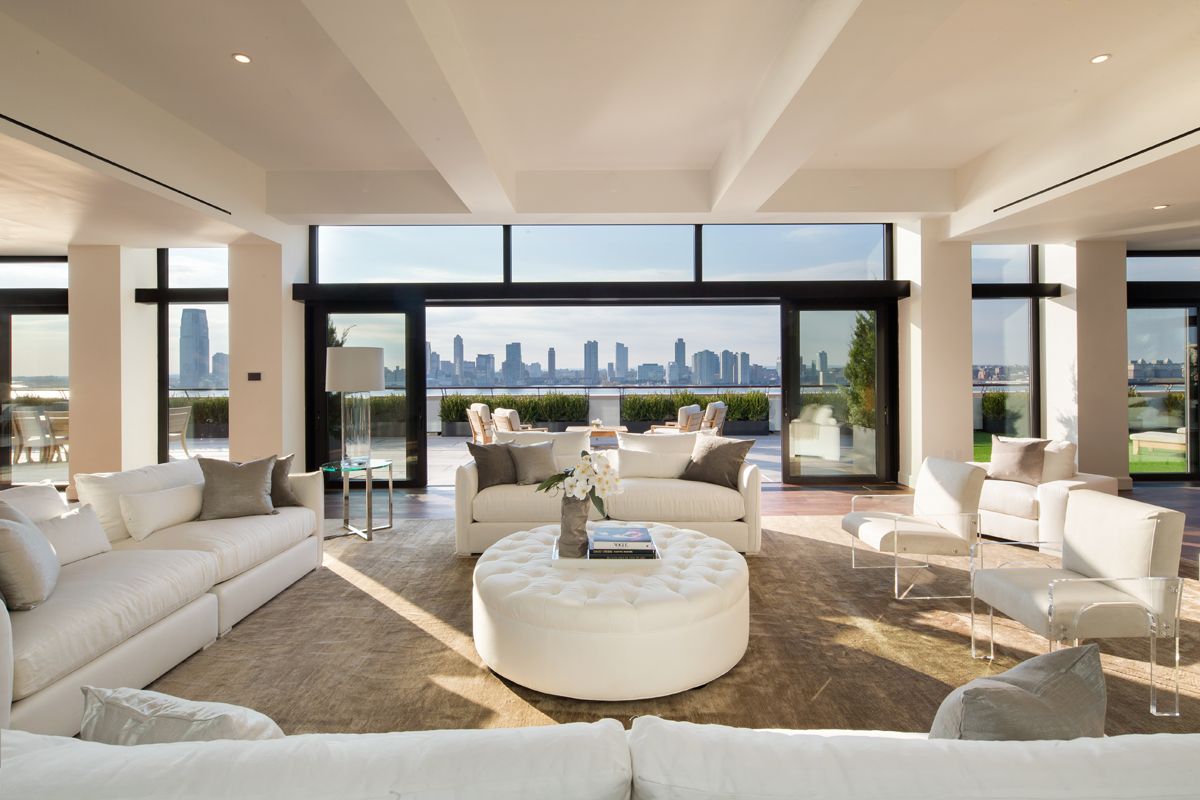

Courtesy of Meridith Baer Home
Her eponymous firm, Meridith Baer Home, continues to make its mark on the country’s major luxury home markets: Los Angeles, San Francisco, Miami, New York and Hamptons. “We install over 140 properties per month and many of those sell in less than 30 days,” she tells us. “In 2017 alone, we helped sell over $9 billion in real estate.” On the eve of her firm’s 20th anniversary, we sat down with Baer to find out everything she knows about the industry she helped start and what she envisions for the future.
Coldwell Banker Global Luxury You started the concept of home staging 20 years ago. What gave you the idea?
Meridith Baer It started out as a favor for a friend who had built a lovely spec home in the Brentwood area of Los Angeles. I moved in a lot of my personal furnishings to show potential buyers how they might live in the space. Because there was a central courtyard which you could see from nearly every room in the home, I also created outdoor living areas installing numerous pots planted with flowers and trees. It went from being a lovely shell to a lovely home. The house sold in a matter of days for a half million over asking! The brokers asked if I would do the same thing for other listings they had. I said yes, and “staging” was born. I didn’t come up with the name, the brokerage community did. It was only then that I realized what a big need there was for staging. Buyers might be rocket scientists and scholars, but they don’t necessarily know how to make their home welcoming and warm or how to use specific spaces.
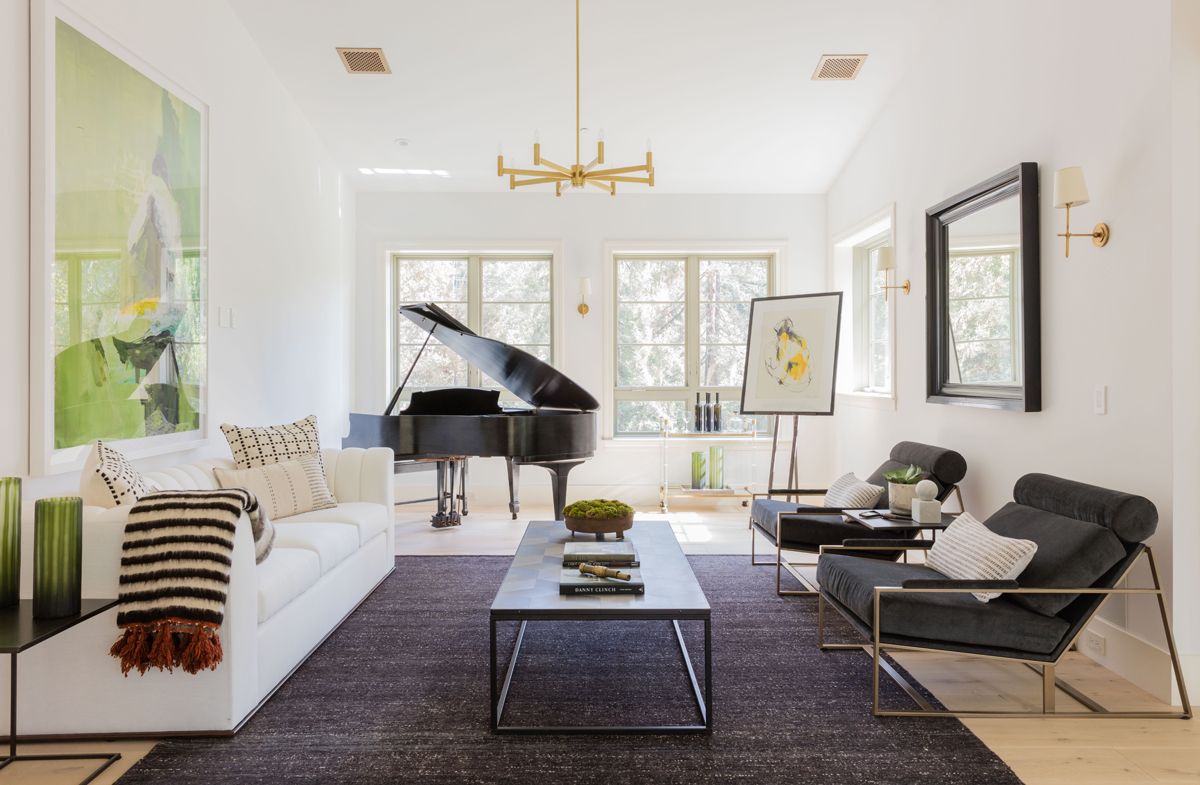
Courtesy of Meridith Baer Home
Coldwell Banker Global Luxury Was it primarily focused in high-end of the market? Now, home staging is in every part of the market.
Meridith Baer Yes, the homes we staged in the first year or two were all very high end. And once staged, they sold right away, sometimes with multiple offers. Soon the expectation was that homes should look their wedding day best when they come out to market, and it applied to many price points.
Coldwell Banker Global Luxury Can you trace your firm’s evolution for our readers…where did you get your start? How many employees did you have when you first started? And today, you have over 250 employees and 35 designers in offices Los Angeles, New York, Miami, San Francisco,– correct?
Meridith Baer Previously, I had been an actor and screenwriter, but found my heart was found in making homes beautiful. I fixed up a home I’d been leasing and when the owner saw what I had done, he said “I’m going to make some money on this!” And he sold the home out from under me. This is when that friend asked if I’d put my furniture in his spec home. I figured it would be fun and that way I wouldn’t have to pay for storage. Little did I know that I would be moving that furniture from house to house for the rest of my life! Initially, I paid some friends to help and we would pick up day workers from Home Depot to help us install. But we would be lifting right alongside them. Being a writer, I wrote the first contract for the company, describing how it would work. Little by little, I found amazingly talented designers, furniture restorers, furniture makers, business development people, movers, organizers and office staff. Together, we built the business into what it is today. Once I signed up more than one home at a time, I had to run around town buying and borrowing. Soon, I had three or four men working for me full-time and was installing at least a home a week.
Twenty years later, we have over 250 employees and 300,000 square feet of warehouse inventory. The first nine months of this year, we’ve done over 1,500 installations on the West Coast alone. We currently have about 700 homes installed. On the West Coast, we have 35 designers….most weeks we are moving into 30 homes and out of 30 homes. Sometimes more.

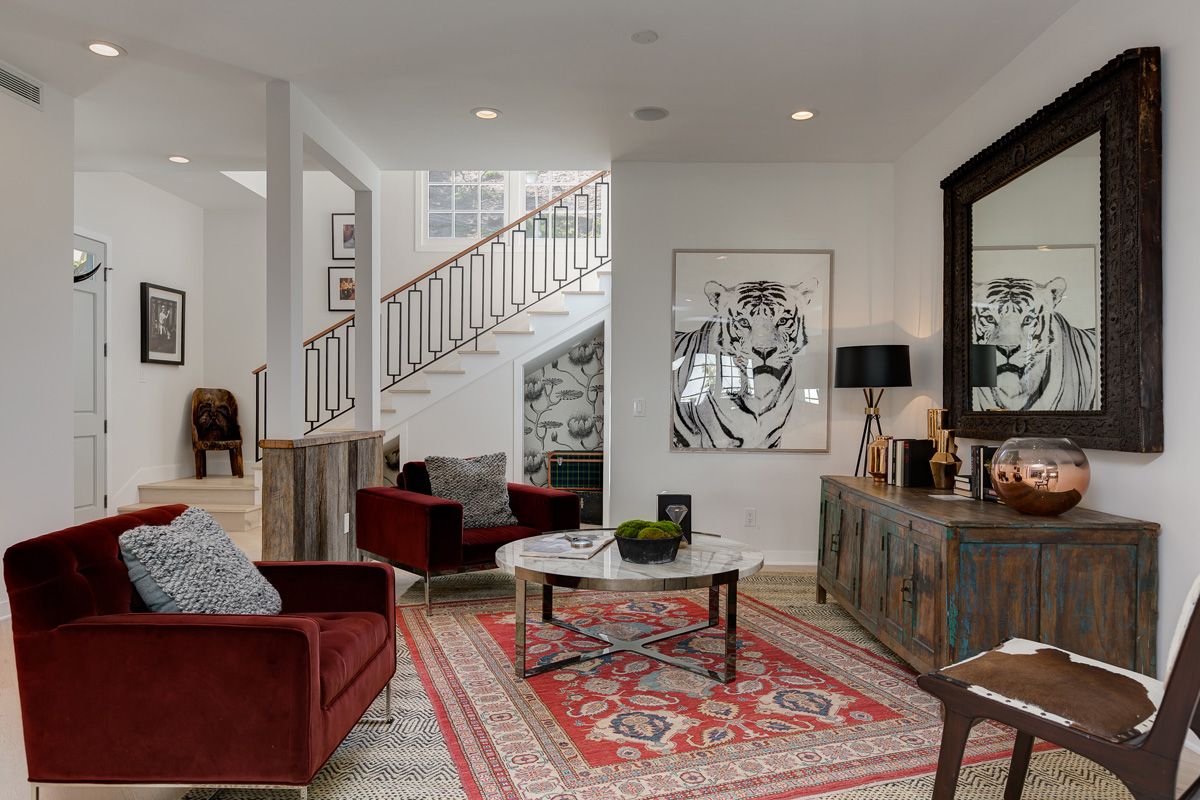
Courtesy of Meridith Baer Home
Coldwell Banker Global Luxury Obviously you’ve witnessed a lot of growth and change in the industry over the last two decades. What was it like when you first started your business, compared to today?
Meridith Baer There has been so much change. My first storage was the garage of whichever home I had staged. I would negotiate down the install price if the homeowner let me live there. Then we moved to 1,000 square feet, then 5,000, then 15,000…and finally in 2007, I bought my first warehouse in Vernon, near downtown Los Angeles. We still have that warehouse, but we use it primarily for manufacturing and restoring furniture now.
In the beginning, we would snap photos of the inventory we left at a home, and write a quick list. Now everything is barcoded, scanned when it goes out and scanned when it comes back. As requests came in, we added other services:
- We often sell some or all of the furniture to the buyer, or to the next door neighbor or broker.
- We do “Luxury Lease,” which is leasing furniture for someone to live with.
- We have a large interior design department.
- We do “Instant Home” wherein we get a clear idea of the type of furnishings the client wants, and then deliver a home of furniture in a week’s time with a price list. They choose what they want. Then we can make another delivery or two or finish the home off with our interior design department.
- We do model homes and even some events and films.
- We donate gently used furniture to the needy and Homeless organizations.
- We’re moving into doing boutique hotels.
- We design and manufacture much of our furnishings now.
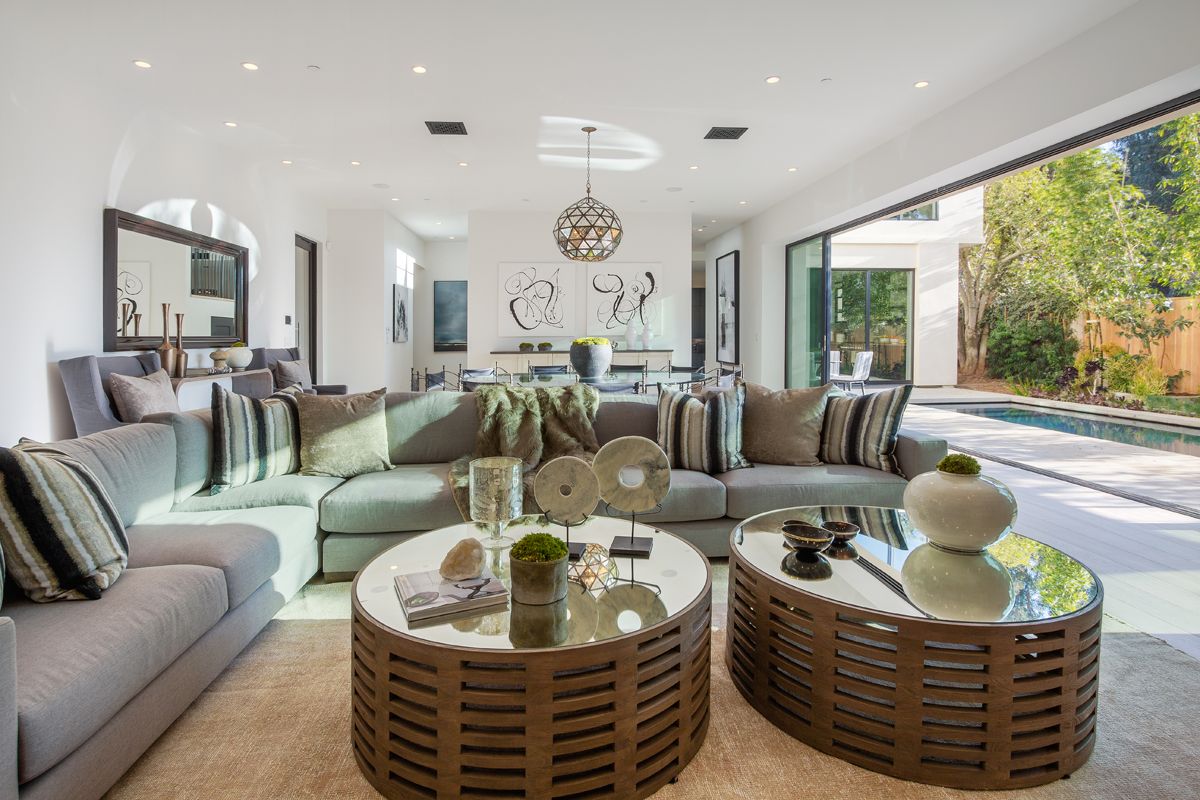 Courtesy of Meridith Baer Home
Courtesy of Meridith Baer Home
Coldwell Banker Global Luxury Can you talk about a few of the most significant shifts you’ve seen, particularly in the high-end?
Meridith Baer In the late 1990s, the desired look in the high-end was a very layered mix of traditional furniture, Persian rugs, Asian and European antiques. Over the years, home styling — like fashion — changes. Traditional morphed into “transitional,” which was lighter in feel and included modern and contemporary touches, as well as mid-century. In recent years, the trend went even more modern. We love all looks and have the inventory to install them. As generations grow up, they want their own look, not their parents’ style, and I’m all for change! I change my house around often.
Personally, I like an eclectic mix of fresh relaxed upholstered pieces (often in our signature white or off-white fabrics), combined with some modern pieces, a few antiques, and treasures collected in my travels.
The popularity of certain home styles has changed. For years, the most popular style was Mediterranean, then East Coast traditional….now we see a lot of Modern Farmhouse homes and very contemporary homes. Frankly, I love them all: old and new. One thing we know is that trends are always changing, so we stay prepared to see which way the wind shifts.
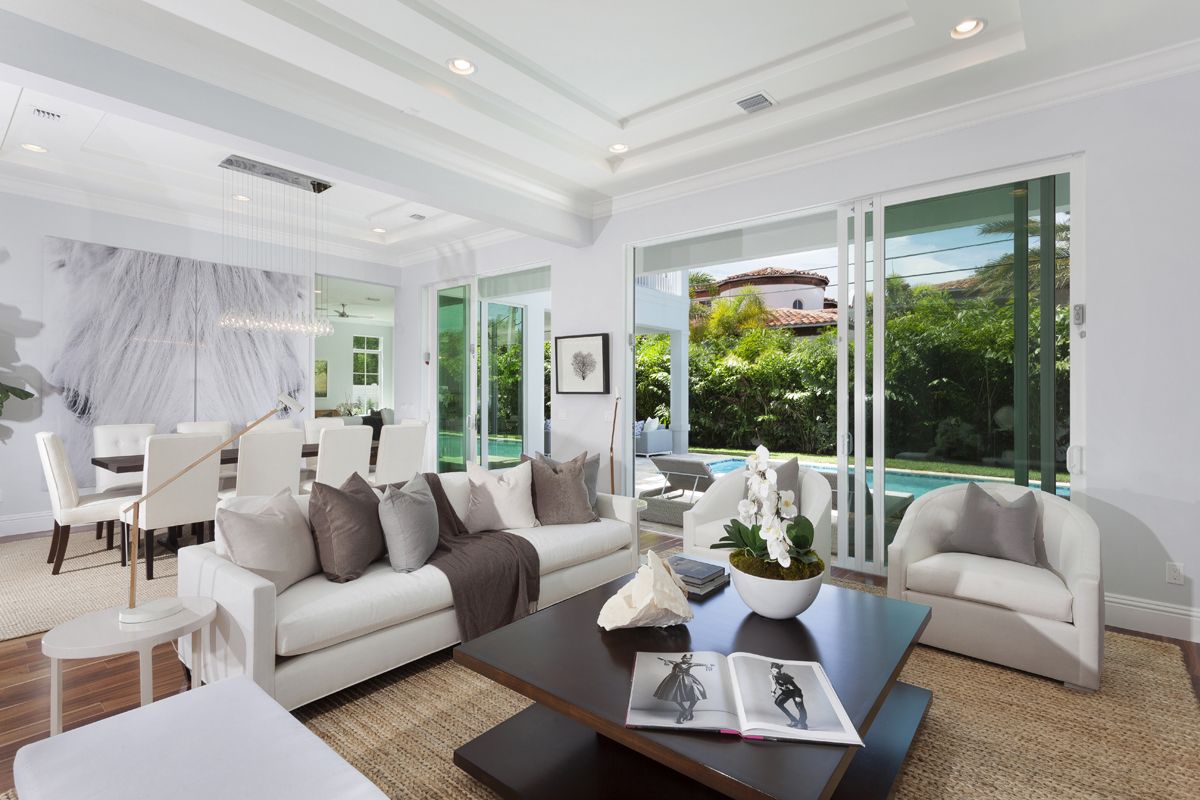
Courtesy of Meridith Baer Home
Coldwell Banker Global Luxury How closely do you like to work with the real estate agent to determine a home’s staging?
- Meridith Baer It depends on the broker. Some brokers are very involved and have strong opinions, and others trust our experience and give us only general feedback. Either way, what is helpful is to know in advance as clearly as possible is what “look” is desired by the broker and/or the client. After that, our designers like the space to complete their installation, and then get feedback afterwards.Coldwell Banker Global Luxury How much has the expectation in the luxury sector shifted from simply “home staging” to complete lifestyle curation, down to the dishes and toiletries and artwork on the walls that ends up staying with the home?Meridith Baer In the luxury sector, the expectations are growing and growing. Some of our clients ask for interior design for some spaces. We will custom make furnishings for them and these items will sell with the house. In rare cases, we will custom make furnishings for the entire house. However, sometimes the buyer doesn’t want the furniture that the homeowner thought they would want, because they want a different aesthetic. Though we often have an idea of who might buy a home, we are sometimes shocked by the age or type of person who actually does buy it.Other clients fill the garages with expensive cars or have models walking around during open houses. Some consign very expensive original art. The intention is to attract a “flashy” buyer in these cases. The truth is that we never know who will buy a property. A conservative family might want the house and be put off by the flash. We don’t want to limit the number of people who might see themselves living in the home.
We are rarely asked to stock kitchens and bathroom unless it is for a luxury lease, where someone is renting to live there.
We’ve learned to simply go with the flow. We’re in the service business, so it is our job to deliver whatever is needed.
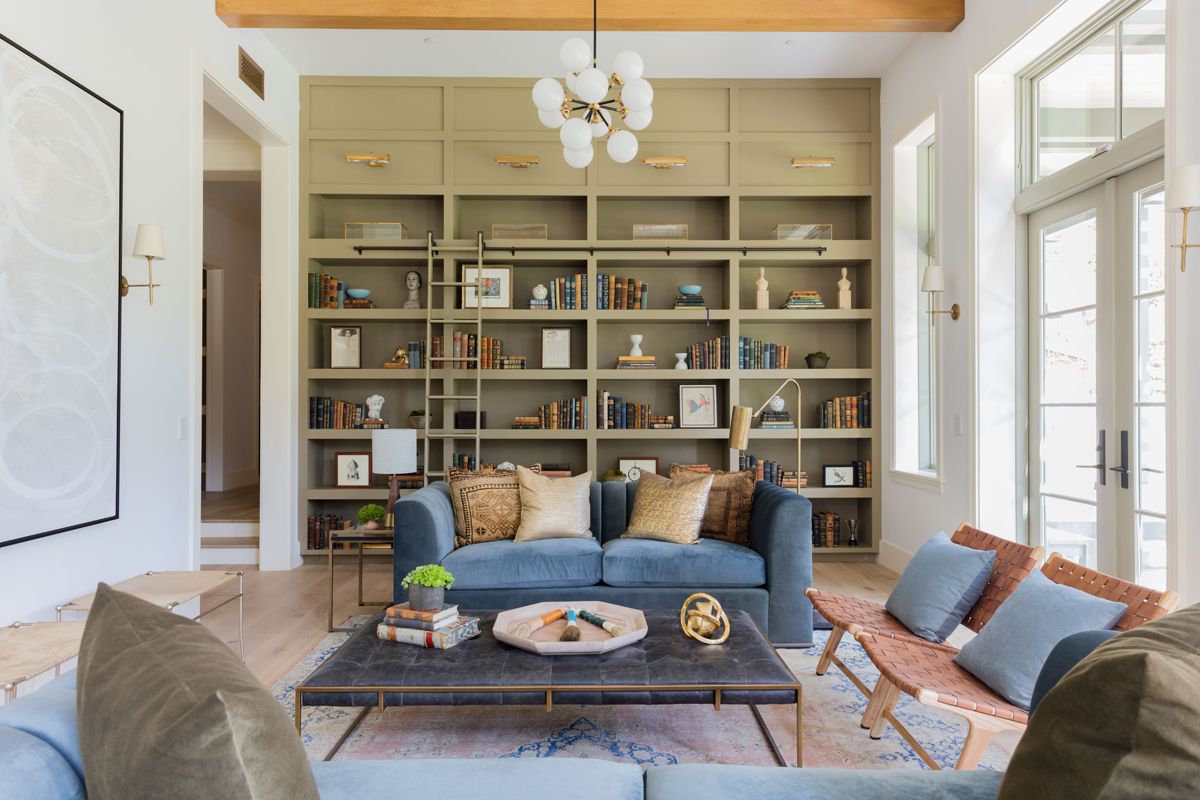
-
Courtesy of Meridith Baer Home
Coldwell Banker Global Luxury Let’s talk a little about trends from market to market. What do today’s luxury buyers want to see in certain markets?
Meridith Baer There are changes in taste from city to city. Beach towns tend to want a more casual look, and large cities where most all live in apartments want a more sophisticated look. Outdoor living is extremely important to buyers on the West Coast and Florida, whereas in NYC, few homes have outdoor spaces. In Manhattan and other cities, the rooms might be smaller, so the furniture has to be smaller, as well as fit in the elevator of high rises. The East Coast tends to be more understated than California and Florida. Northern California is more understated than Southern California. Certain furniture transcends place, though, such as beautifully made white upholstered furniture with clean lines. Orange County likes a layered look, while the trend elsewhere in Southern California is more minimal.
Coldwell Banker Global Luxury What sort of staged elements tend to wow and impress luxury buyers today?
Meridith Baer We rarely go for “Wow” with our staging designs because our buyers are looking for home, a place they feel safe, secure and at peace, a place they can see themselves relaxing with friends and family.
We are, however, constantly on the lookout for beautiful new design trends. And our group has begun to develop our own designs, so that our buyers will be seeing pieces they have not seen before.
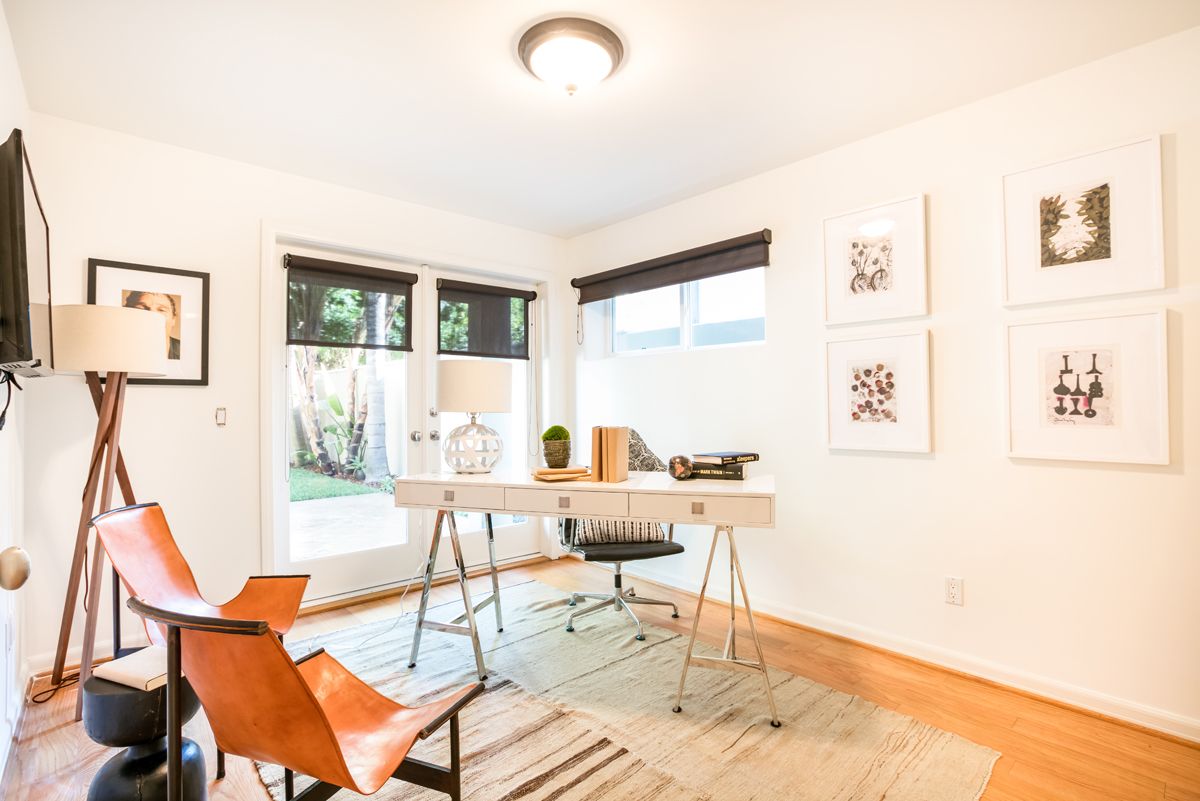
Courtesy of Meridith Baer Home
Coldwell Banker Global Luxury Are there any design trends that are on their way out? Or you wish you would see less of?
Meridith Baer I’ll be honest. I’m getting really tired of copies of midcentury modern furniture. Some of the square modern homes that are essentially boxes all seem to be furnished with the exact same furniture — very cookie cutter. The trend we expect is to start seeing a greater variety of styles and a return to Hollywood Regency and other classical styles, mixed with the new.
Coldwell Banker Global Luxury In the luxury world, there is a lot of market crossover as buyers tend to own multiple homes in different cities and travel frequently. How much of a consideration do you place on where buyers are coming from in a particular feeder marketplace? Do you research those other locales?
Meridith Baer We spend a lot of time on research of this type. For example, our Boca Raton buyers often have homes in Manhattan….so that buyer will want a sophisticated, reserved look…whereas our Miami buyer will want more flash.
Coldwell Banker Global Luxury What are three myths that you would like to dispel right now about home staging?
Meridith Baer The first myth is, “home staging is expensive.” If the house sells fast for more than it would otherwise, you make your money and a lot more back…and you make it fast. The second myth is “home staging is only for expensive properties.” All properties will sell faster for more if they are dolled up. And the last myth is, “I’ll try to sell it empty first.” Homes that sit on the market for some time without selling get a stale reputation. It may be hard to get brokers and buyers to come back.
Coldwell Banker Global Luxury If you could leave a luxury real estate agent with one piece of staging advice, what would it be?
Meridith Baer Keep it simple.

